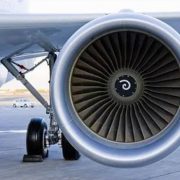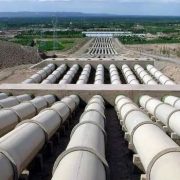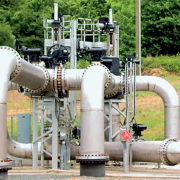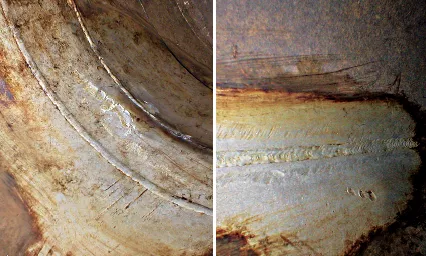The thickness tolerance of stainless steel plate
We usually call the thickness of 4-25.0 mm stainless steel plate in the middle plate, the thickness of 25.0-100.0mm stainless steel thick plate, thickness of more than 100.0mm is extra thick plate.When looking for a suitable stainless steel plate, there are several different grades available based on the strength of the metal and its chemical composition. There is a high grade that is made from Cr-Ni alloys which are generally used in commercial applications such as Pressure vessels, boiler shells, bridges, automobiles, shipbuilding, construction and other industrial purposes.
It is important to note what type of use the stainless steel plate is going to have in any given industrial application. Some applications require a hardened, reinforced plate that is able to withstand hammer blows, abrasions and impact. Others may require a more brittle, softer material that is able to cope with bending and deformation. The other criteria that need to be observed is the degree of corrosion resistance and this will dictate what grade of stainless steel plate is best for the application. The conmmonly used grades are 304, 316L, 310S, and 904L stainless steel plate. Here is the allowable thickness tolerance of stainless steel plate from ASTM, JIS and GB specification.
JIS Stainless steel plate
| Thickness | Width | |
| <1250 | ≥1250<1600 | |
| ≥0.30~<0.60 | 士0.05 | 士0.06 |
| ≥0.60~<0.80 | 士0.07 | 士0.09 |
| ≥0.80~<1.00 | 士0.09 | 士0.10 |
| ≥1.00~<1.25 | 士0.10 | 士0.12 |
| ≥1.25~<1.60 | 士0.12 | 士0.15 |
| ≥1.60~<2.00 | 士0.15 | 士0.17 |
| ≥2.00~<2.50 | 士0.17 | 士0.20 |
| ≥2.50~<3.15 | 士0.22 | 士0.25 |
| ≥3.15~<4.00 | 士0.25 | 士0.30 |
| ≥4.00~<5.00 | 士0.35 | 士0.40 |
| ≥5.00~<6.00 | 士0.40 | 士0.45 |
| ≥6.00~<7.00 | 士0.50 | 士0.50 |
ASTM Stainless steel plate
| Thickness | Allowable tolerance | Width | ||
| 上 | 下 | ≤1000 | >1000~≤1300 | |
| 0.10 | 0.03 | 0.03 | ||
| 0.15 | 0.04 | 0.04 | ||
| 0.20 | 0.05 | 0.05 | ||
| 0.25 | 0.05 | 0.05 | ||
| 0.30 | 0.03 | ——- | ||
| 0.40 | 0.04 | 0.04 | ||
| 0.50 | 0.08 | 0.08 | ||
| 0.50 | 0.045 | 0.05 | ||
| 0.60 | 0.05 | 0.05 | ||
| 0.75 | 0.10 | 0.10 | ||
| 0.80 | 0.05 | 0.05 | ||
| 1.00 | 0.055 | 0.06 | ||
| 1.20 | 0.08 | 0.08 | ||
| 1.25 | 0.13 | 0.13 | ||
| 1.50 | 0.08 | 0.08 | ||
| 1.75 | 0.15 | 0.15 | ||
| 2.00 | 0.18 | 0.18 | ||
| 2.00 | 0.10 | 0.10 | ||
| 2.25 | 0.20 | 0.20 | ||
| 2.50 | 0.23 | 0.23 | ||
| 2.50 | 0.10 | 0.11 | ||
| 2.75 | 0.25 | 0.25 | ||
| 3.00 | 0.25 | 0.25 | ||
| 3.00 | 0.13 | 0.13 | ||
| 3.25 | 0.30 | 0.30 | ||
| 3.50 | 0.30 | 0.30 | ||
| 3.75 | 0.36 | 0.36 | ||
| 4.00 | 0.36 | 0.36 | ||
| 4.00 | 0.17 | 0.17 | ||
| 4.99 | 0.36 | 0.36 | ||
| 5.00 | 0.17 | 0.17 | ||
| 6.00 | 0.17 | 0.20 | ||
| 8.00 | 0.17 | 0. | ||
GB Stainless Steel Plate
| Thickness | Allowable thickness tolerance | ||
| High precision(A) | Standard precision(B) | ||
| >600~1000 | >1000~1250 | >600~1250 | |
| 0.05~0.10 | ——- | ——- | ——- |
| >0.10~0.15 | ——- | ——- | ——- |
| >0.15~0.25 | ——- | ——- | ——- |
| >0.25~0.45 | 士0.040 | 士0.040 | 士0.040 |
| >0.45~0.65 | 士0.040 | 士0.040 | 士0.050 |
| >0.65~0.90 | 士0.050 | 士0.050 | 士0.060 |
| >0.90~1.20 | 士0.050 | 士0.060 | 士0.080 |
| >1.20~1.50 | 士0.060 | 士0.070 | 士0.110 |
| >1.50~1.80 | 士0.070 | 士0.080 | 士0.120 |
| >1.50~2.00 | 士0.090 | 士0.100 | 士0.130 |
| >2.00~2.30 | 士0.100 | 士0.110 | 士0.140 |
| >2.30~2.50 | 士0.100 | 士0.110 | 士0.140 |
| >2.50~3.10 | 士0.110 | 士0.120 | 士0.160 |
| >3.10~4.00 | 士0.120 | 士0.130 | 士0.180 |






